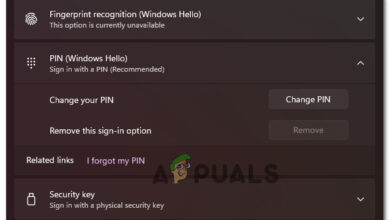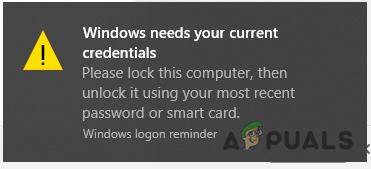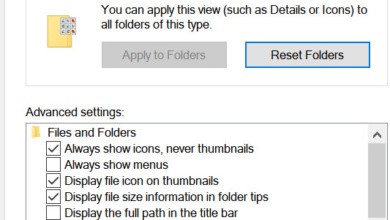How to Enable or Disable Windows 10 Secure Sign-In
The default login page includes a small script to move your login details to the email system (user name and password). It’s indeed feasible that if somebody intercepted this packet delivery the user name and password will be breached.

On the other hand, Secure Sign-in is an extra layer of security for your Sign-in screen to protect it from various attacks. A major problem arises when a virus or malicious software program imitates a sign-in window to extract username and password credentials. In these instances, Ctrl + Alt + delete can guarantee you see the correct sign-in page. When this option is enabled, the user has to press Ctrl + Alt + Delete on the lock screen before the Sign-in process begins.
As this security option is by default disabled, so you have to perform several steps to enable it. In this article, we’ll direct you through the entire process to enable and disable Secure Sign-in in Windows 10 using different security methods.
There are three methods to enable and disable Windows 10 Secure Sign In:
Method 1: Using Netplwiz
Using the search bar, the user is able to open the ‘Run’ app in order to update the Secure Sign-in using the Netplwiz method. Users might perform two to three clicks and have to go through a dialogue box to reach the User Account window. You have to follow below-mentioned steps to enable and disable Secure Sign-in in Windows 10 using Netplwiz method:
- Press ‘Windows key + R’ or Click on the Search bar of your system right next to the windows icon.
- In the search bar type ‘Run’ and click on the ‘Run’ app as shown in the below image.

- A dialogue box will appear. Type ‘netplwiz’ in the textbox named ‘Open’ and click on the ‘OK’ button to continue as shown in the below image.

- Another dialogue box will appear right after your click on ‘OK’ as shown in the below image.
- Click on the ‘Advanced’ tab and checkmark the option of ‘Require users to press Ctrl + Alt + Delete’ right under the Secure sign-in.
- First, click on the ‘Apply’ button then click on ‘OK’. Secure Sign-in is enabled
- If you want to disable Secure Sign-in just uncheck the option of ‘Require users to press Ctrl + Alt + Delete’.
- Click on the ‘Apply’ button then click on ‘OK’. Secure Sign-in is disabled
- Restart your Windows 10 to see changes.

Method 2: Using Local Security Policy
If you are unable to change Secure Sign-in using the Netplwiz method you can try Local Security Policy Settings. Using the search bar, you are able to open the ‘Run’ app in order to update Secure Sign-in. You might have to perform eight to ten clicks and have to go through a dialogue box to reach the Interactive Logon window. You have to follow below-mentioned steps to enable and disable Secure Sign-in in Windows 10 using Local Security Policy method:
- Press ‘Windows key + R’ or Click on the Search bar of your system right next to the windows icon.
- In the search bar type ‘Run’ and click on the ‘Run’ app as shown in the below image.

- A pop-up dialogue box will appear. Type ‘secpol.msc’ in the textbox named ‘Open’ and click on the ‘OK’ button to continue as shown in the below image.

- Another window will appear right after your click on ‘OK’ as shown in the below image.

- Expand ‘Local Policies’ listed on the left side in the Local Policy Window and choose the ‘Security Options’ subdomain under there.
- After that, scroll to the right side, and double-click the entry ‘Interactive Logon: Do Not Require CTRL+ALT+DEL’ as shown in the below-mentioned image.

- The below-mentioned dialog box appears with the ‘Local Security Setting’ tab opened by default.
- Click on the ‘Enabled’ radio button if you want to disable Secure Sign-in in Windows 10. Click on the ‘Apply’ button followed by the ‘OK’
- Click on the ‘Disabled’ radio button if you want to enable Secure Sign-in in Windows 10. Click on the ‘Apply’ button followed by the ‘OK’
- Close the opened window and restart your computer.

Method 3: Using Registry Editor
If you are unable to change Secure Sign-in using the above-mentioned methods, you can try Registry Editor Settings. Using the search bar, you are able to open the ‘Run’ app in order to update Secure Sign-in. You might have to perform eight to ten clicks and have to go through two dialogue boxes to update Secure Sing-in in the Registry Editor window. You have to follow below-mentioned steps to enable and disable Secure Sign-in in Windows 10 using Registry Editor Method:
- Press ‘Windows key + R’ or Click on the Search bar of your system right next to the windows icon.
- In the search bar type ‘Run’ and click on the ‘Run’ app as shown in the below image.

- A pop-up dialogue box will appear. Type ‘regedit’ in the textbox named ‘Open’ and click on ‘OK’ to continue as shown in the below image.
- Another window will appear named as Registry Editor, right after your click on “OK” as shown in the below image.

- Expand ‘HKEY_LOCAL_MACHINE’ listed on the left side in the Registry Editor window and navigate through the following subdomains under there.
HKEY_LOCAL_MACHINE -> SOFTWARE -> Microsoft -> WindowsNT -> CurrentVersion -> Winlogon
- After double-click on the option named as Winlogon, scroll to the right side and double-click the entry ‘DisableCAD’ as shown in the image below.

- The below-mentioned dialog box appears as highlighted.
- Now to disable Secure Sign-in type ‘1′ in the textbox named ‘Value data’ and click on the ‘OK’
- To enable Secure Sign-in type ‘0′ in the textbox named ‘Value data’ and click on the ‘OK’
- Close the Registry Editor window and restart your Windows 10 to see changes.






